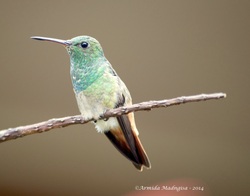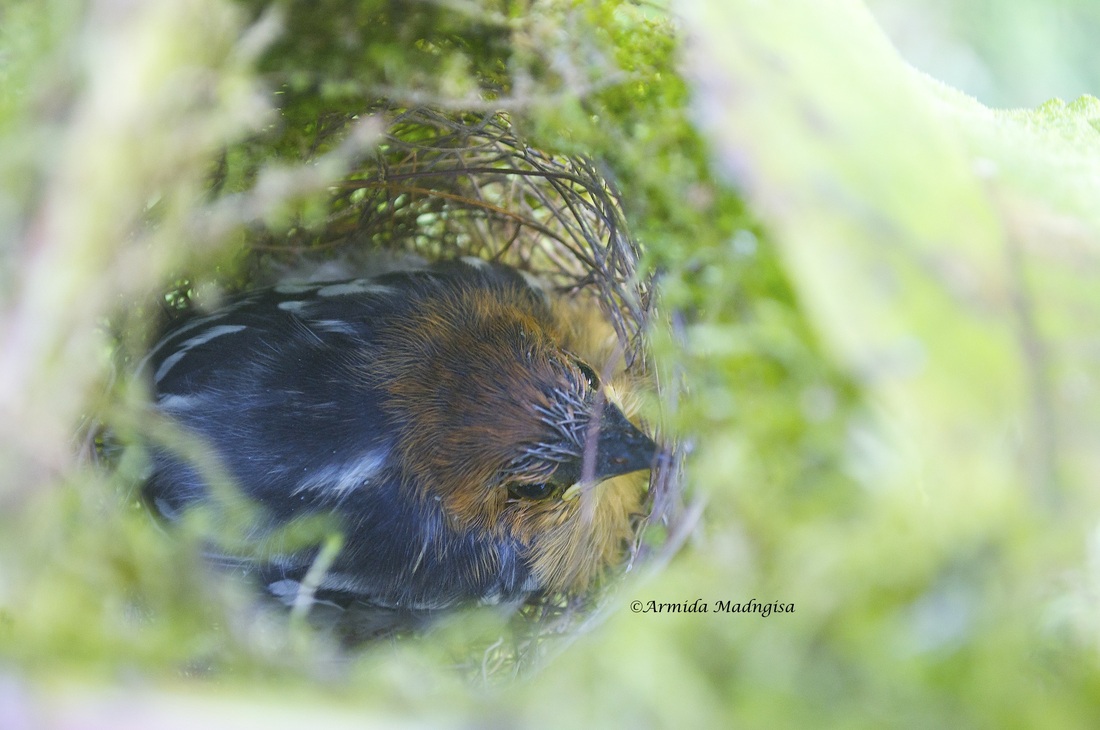|
A common bird at Kabalebo. During the mornings and late afternoons very active. You can spot this bird at vine-tangled low bushes (along rivers or forest edges) This year I witnessed the incubation time of this small bird. The nest of the Guianan Streaked Antwren is made from a mix of fine grass, roots and moss. Both male and female were busy with the construction. Making the nest took at least 12 days of their time.
The result: a 'basket' nest, small enough to fit in one's hand. Dangling on a single branch with (sometimes) a leaf above used as cover-up. 29.01.14 - 05.02.14: I found a nest next to the airstrip-edge, 1 meter above the ground. 2 eggs spotted. Both male and female were taking turns. 05.02.14 - 13.02.14: Male and female taking turns during incubation time. 14.02.14: 1 egg hatched. 15.02.14 - 23.02.14: I noticed that the hatchling was 2 cm big. First stage of growing feathers (no color) 24.02.14 - 25.02.14: immature 5 cm big. The head is light brown spotted. 26.02.14 - 27.02.14: juvenile is 8 cm big. Brown color on the head. Visible are white streaks on the wings. 28.02.14: juvenile flew out of the nest into the forest. During my observation I noticed that both the male and the female were feeding their young.  I have been observing the Fork-tailed Woodnymph for three years now. A common hummingbird at Kabalebo. He/she is not shy/afraid for other birds or humans, they are rather dominant and defensive. They sip nectar from blossoming flowers, sugar water from feeders in the open and in the interior. I have witnessed many times that the male started to 'complain' the moment you touch his tree. I have taken this picture of the male near his tree and as you can see, he is not afraid or shy, but is rather curious. When there is enough sunlight you can spot the wonderful colors on the male his neck and chest. If not, it looks like he has dark/black colors. The female looks less 'colorful' since she has to incubates the eggs all by herself and a camouflage color always comes in handy. In 2012 I was lucky to 'spot' a nest of this hummingbird, about 2.5 meters above the ground on a branch.  Hummingbirds are one of my favorite birds in Kabalebo. They are so tiny and fast. Here you see the Green-bellied Hummingbird, some know him as the Copper-tailed Hummingbird. Last year, 2013, I saw him/her from the first week of february till ending of march. The remaining months he was absent, until ... now. Since 10.2.14 I have seen this wonderful small creature flying nearby. He enjoys the nectar from the blooming flowers and the sugar water from the feeders. One time I saw him 'hawking' - catching insects in mid air. The great thing about the Green-bellied Hummingbird is that I never seen him being chased away by other hummingbirds or other birds. This morning I was about to clean and refill a feeder and I noticed this tiny creature was already nearby and was flying from one branch to the other. When I returned with the feeder, he was quietly sitting on the same branch I wanted to attach the feeder. It looked like he was waiting for his 'breakfast'. During the mornings I enjoy his 'yoga' sessions. After having breakfast he sits down quietly and starts to stretch his wings in all different directions. |
Archives
June 2024
Categories
All
|







 RSS Feed
RSS Feed